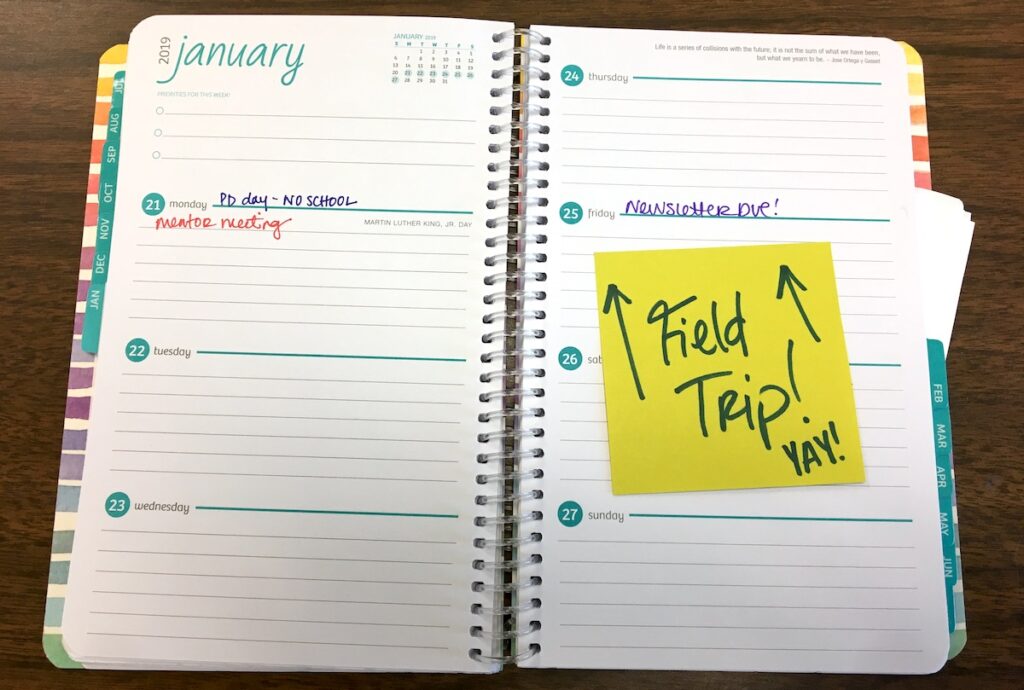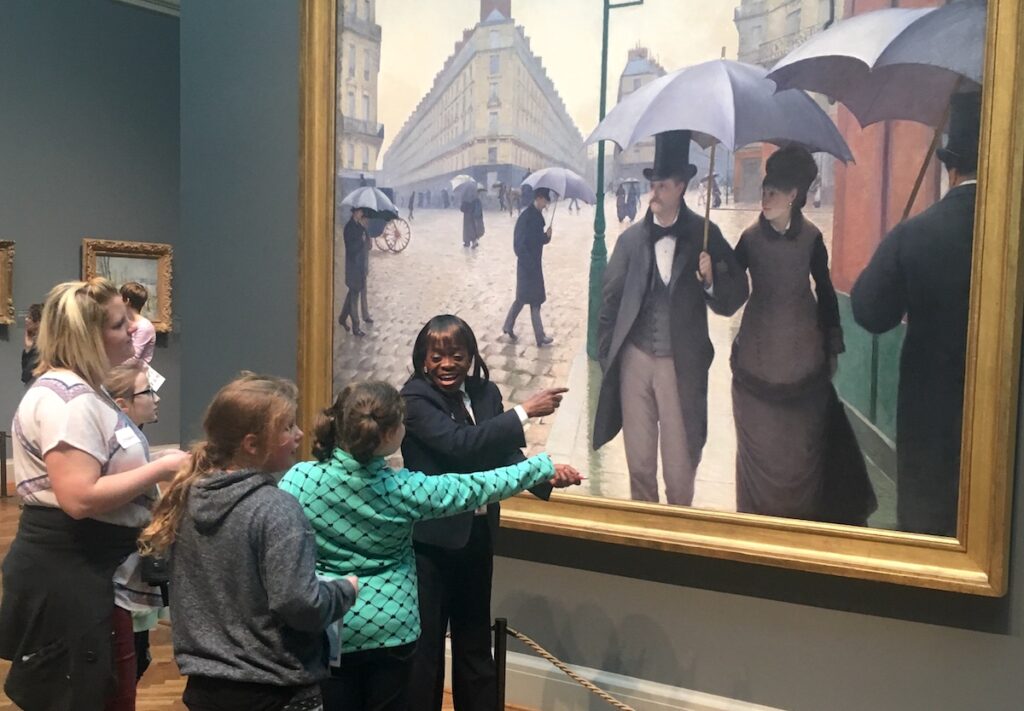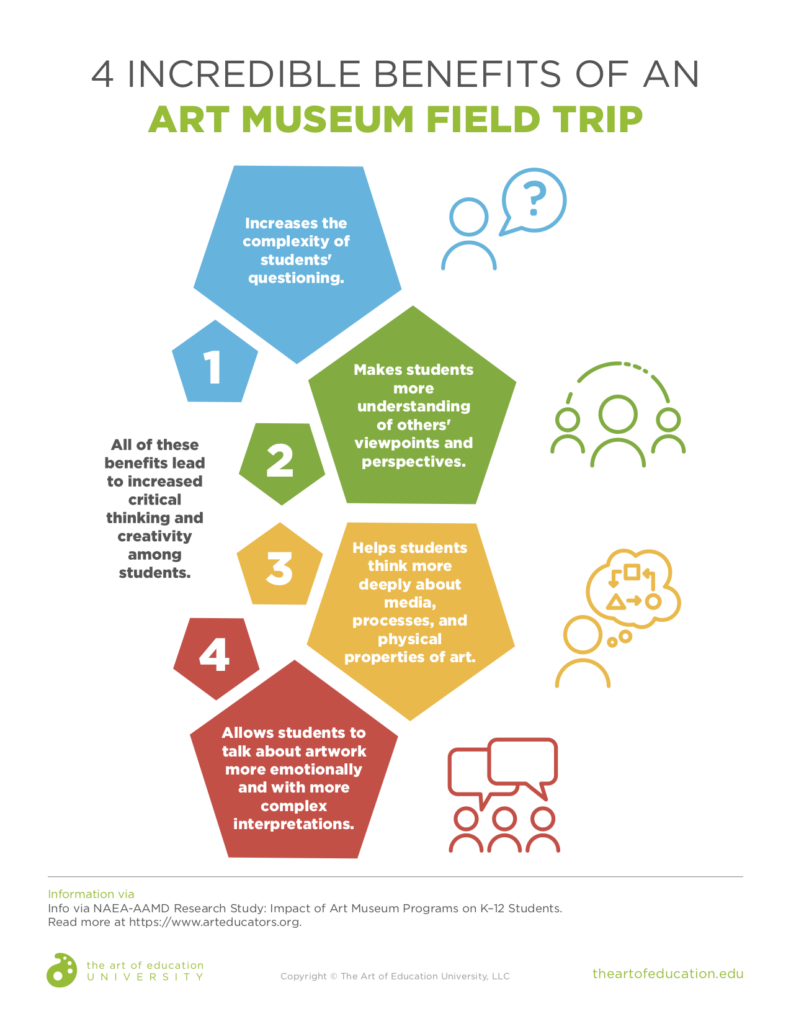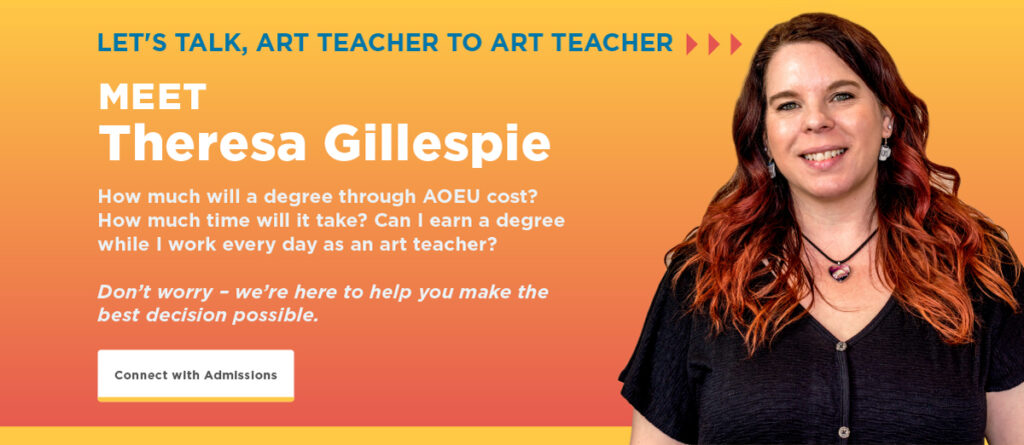No doubt, taking students on a field trip can be stressful. There are a million and one logistics to figure out, from permission slips to transportation to lunch. Plus, there’s the time and effort spent preparing your students for what they’re about to see. However, a study published in 2018 by the National Art Education Association (NAEA) and the Association of Art Museum Directors (AAMD) shows all the hard work is worth it.
If you’ve been lobbying to get permission or funds to take your students on a field trip, this would be persuasive research to share. It’s also a great reminder to keep in touch with what’s going on in the broader field of art education. You never know when a group might be conducting research that can help you advocate for your program.

A Brief Overview
The study is titled Impact of Art Museum Programs on Students Research Study. Funded by the NAEA and AAMD, it looked at the impact of one facilitated art museum field trip on students in grades four to six. Half of the students in the study visited an art museum for a docent or museum educator-guided field trip. The other half of students had a trained docent or museum educator visit their classroom and facilitate a discussion while looking at reproductions of artworks.
The findings were pretty incredible. The study showed the group who went to the museum had increased creative thinking, critical thinking, and emotional connections. The same was not true for the students who only looked at reproductions.
If you’d like to read further, you can find many helpful resources, including Summary Reports and a User Guide, on the NAEA website.
Diving Deeper
As mentioned, the study found exposing students to a guided museum visit even one time had a variety of advantages. The Summary Report and Discussion indicates the study found four main benefits for students. We’ll explore each below.
1. Questioning
According to the study results, the group of students who visited the art museum asked higher-level questions about the art they were seeing than students who had stayed in their classroom. The Study Report and Discussion made an eye-opening point about questioning, curiosity, and critical thinking, noting, “Questioning demonstrates an openness and curiosity—characteristics inherent in creative thinking. Questioning also applies to critical thinking, as asking questions is an important stage in formulating an interpretation.”
We know curiosity and critical thinking reach far beyond the art room. Countless studies and polls have shown creativity and innovation are some of the top skills recruiters are looking for in the workforce. If you want more resources on increasing creativity in your classroom, check out AOEU’s Creativity in Crisis course. You will learn about the nine principles of creativity and work to build a culture of creativity in your classroom.
2. Multiple Interpretations
The study also showed students who visited the museum were more likely to believe one piece of art could be interpreted in multiple ways by multiple people. As the Study Report and Discussion points out, “The finding that students who experience a facilitated single-visit museum program are more likely to think that different people understand artworks differently is compelling, as it demonstrates an open-mindedness toward others’ ideas.”
This finding also points to students using critical thinking skills as they work to see things from multiple viewpoints. In addition, learning how to collaborate with others is an essential 21st-century skill, integral to succeeding in a globally competitive workforce.

3. Physicality of Art
According to the Summary Report and Discussion, there was one unexpected result of the study; after their museum field trip, students were more likely to think about the media, processes, and physical properties of works of art. Thinking about art this way can lead to creative thinking and curiosity about the art, artist, and the way it was made. Helping students tap into this kind of thinking can help them not only in the art room but in many other areas of their lives.
4. Emotional Recall
Finally, the study found students who visited the art museum talked about their experience more emotionally. The Summary Report and Discussion highlights how this might connect to memory when it describes the work of neuroscience professor, Jamie Ward, remarking, “The relationship between emotion and the sensorial response aligns with the claims of professor of neuroscience Jamie Ward (2014)—that multi-sensory experiences, such as museum experiences, activate different neural systems that can result in richer memories.”
Furthermore, the Summary Report and Discussion goes on to say how the intersection of memory and emotion is related to empathy and creating connections. Who doesn’t want to see more empathy and interpersonal connections between students?
Using this Study as an Advocacy Tool
Need some help convincing your administration or leadership that an art museum field trip is worthwhile? Download this infographic to help your case!
Download Now!The Importance of Staying on Top of the Latest Research
As art teachers, we know how powerful creating art and interacting with others’ art can be. Most of our professional development often works to keep us up with learning and teaching in a general sense, but working to stay on top of your game in the field of art is another ballgame.
The Art of Education University’s Master’s Degree in Art Education puts you in the heart of the latest research on teaching and creating art. Coursework is relevant to your role as a visual art teacher and is up-to-date with the latest research and practical application of that research. As a student, you have access to our amazing crew of instructors for support. Plus, our library services databases give you access to tens of thousands of resources and the latest research to help you stay on top of your game.
Keeping up with the latest research in the field can feel like “one more thing to do.” However, if you think about it as mining for advocacy resources, it suddenly becomes a lot more appealing. Who knows, you might just find a fascinating study that finally lets you go on that museum field trip!
How do you keep up with the latest research in the field of art ed?
What benefits have you noticed among your students after a museum field trip?
Magazine articles and podcasts are opinions of professional education contributors and do not necessarily represent the position of the Art of Education University (AOEU) or its academic offerings. Contributors use terms in the way they are most often talked about in the scope of their educational experiences.







